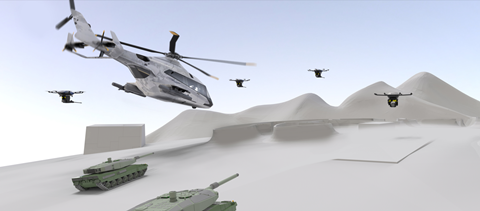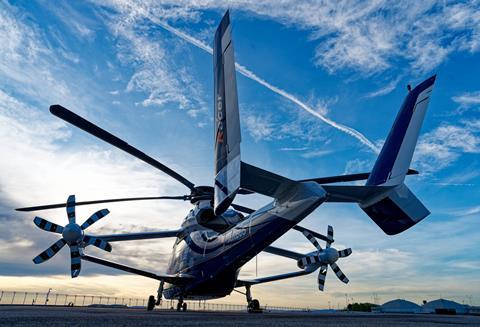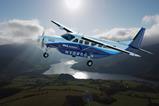Airbus Helicopters chief executive Bruno Even remains hopeful that it can forge a partnership with Leonardo to develop a next-generation European military helicopter, despite its rival partnering with US manufacturer Bell to promote tiltrotor-based platforms.
Both European airframers and US prime Sikorsky were recently selected by the NATO Support & Procurement Agency (NSPA) to conduct concept design studies for a next-generation rotorcraft project it is running on behalf of six member states.

While the project members – France, Germany, Greece, Italy, the Netherlands and the UK – are all European, as a NATO initiative, contracts for the Next Generation Rotorcraft Capability (NGRC) initiative are open to companies based in any alliance country. For instance, the NSPA has previously awarded work on the effort to both GE Aerospace and Sikorsky parent Lockheed Martin.
Airbus had been hoping to partner with Leonardo for the initiative – reprising their collaboration in NH Industries (NHI) along with GKN/Fokker – despite the companies’ differing approaches to addressing the NGRC’s high-speed requirements, respectively preferring compound and tiltrotor architectures.
But Leonardo in February announced a pact with Bell that will see the pair collaborate on tiltrotor-based designs, both for the NGRC and other projects.
Although Even – speaking to FlightGlobal at the Farnborough air show ahead of the NSPA’s 26 July announcement – noted that the NGRC was “far from the launch of a programme”, he conceded that Airbus would prefer to “partner with a European OEM to be able to answer a European requirement, like we did for the [NHI] NH90”.
Even says “in one sense”, he was surprised by Leonardo’s decision to partner with Bell “but from the other side we know that Bell is investing in the tiltrotor concept and the same for Leonardo so probably they want to push this concept to the next stage”.
At this stage, however, the manufacturers’ task is to enable the nations to make an informed decision on the potential trade-offs between different rotorcraft architectures and the performance requirements being pursued.
“Any operational requirements like high speed have a consequence”, he says, relating to characteristics like the size, cost, and maturity of any platform. “Our role as an industry… is to put on the table the best answer and to help the customer make the trade-off… and converge on what could be their view of the future need for military helicopters,” he says.

Even’s belief is that there is “not one fit for all” and based on all requirements so far disclosed “we consider there could be different options depending on where the customer would like to focus”.
That could see the partner nations “perhaps reach a conclusion [that] at the end it means two different options, two different programmes: high speed addressing part of the market, a niche or not, and a traditional helicopter like the NH90 where an upgrade in the future could also answer part of the requirement”.
But for the high-speed element, Even firmly believes a compound rotorcraft – for example adapted from the technology currently being tested on Airbus Helicopters’ Racer civil demonstrator – is the “best solution”.
“The best answer in our mind to a high-speed requirement is a compound architecture because high-speed cannot be the only requirement,” he says.
Ultimately, if the NGRC partner nations decide to launch a new development programme “in such a scenario… as Airbus we really want to be involved”, says Even.
“We consider there should be a European programme to fulfill the needs of a European requirement and we think that the best answer should be European co-operation,” he says.
But only after the operational and technical requirements are agreed on will industry be able to determine “what could be the best industrial co-operation to answer to this need”.































